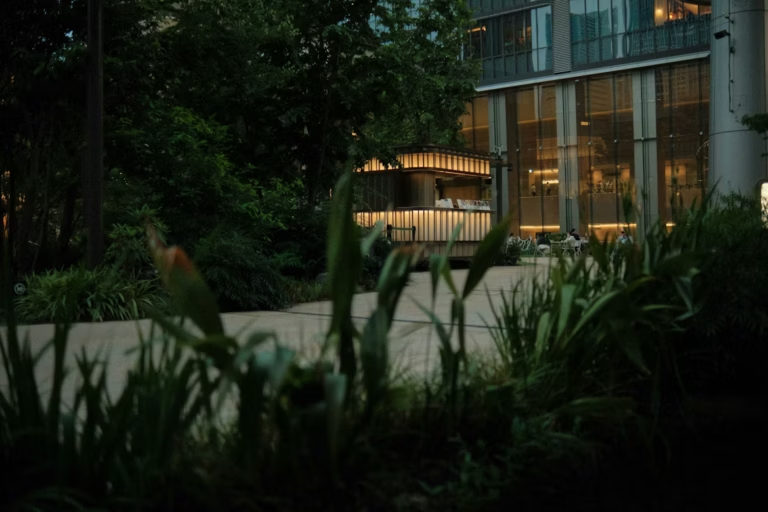Crime Prevention Through Environmental Design (CPTED) is a multidisciplinary approach to deterring criminal behaviour through urban and environmental design. In Australia, where urban areas are rapidly expanding, CPTED plays a crucial role in creating safer, more secure communities.
This article explores the various elements that constitute CPTED and underscores its importance in the Australian context.
What is CPTED?
CPTED is based on the principle that the physical environment can influence human behaviour, including deterring criminal activity.
By designing urban spaces that naturally discourage crime, communities can reduce the need for more invasive security measures.
CPTED incorporates principles from urban planning, architecture, and environmental psychology to create spaces that promote safety and community engagement.
Core Principles of CPTED
CPTED is built on four key principles: Natural Surveillance, Natural Access Control, Territorial Reinforcement, and Maintenance. Each principle is integral to the design and functionality of safe environments.
1. Natural Surveillance
Natural surveillance aims to maximise visibility and awareness within a space.
This can be achieved through strategic placement of windows, lighting, and landscape elements that ensure clear lines of sight.
- Lighting: Adequate lighting is essential in deterring crime, especially in public spaces such as parks and walkways. In Australia, cities like Melbourne and Sydney have implemented extensive street lighting programmes to enhance safety.
- Windows and Sightlines: Buildings with ample windows facing the street allow residents and passers-by to observe the surroundings, increasing the likelihood of detecting suspicious activities.
2. Natural Access Control
This principle focuses on guiding people through a space in a way that restricts access to potential crime targets.
By controlling how and where people can enter or exit a location, it is possible to reduce opportunities for criminal activity.
- Entrances and Exits: Clearly marked and strategically placed entrances can help control foot traffic. In Australia, shopping centres often use this principle to guide customers through monitored areas.
- Landscaping: Using fences, hedges, and other landscape elements to create natural barriers can discourage unauthorised access to private areas.
3. Territorial Reinforcement
Territorial reinforcement encourages community members to take ownership of their environment, creating a sense of belonging and responsibility.
- Signage: Effective use of signage can delineate between public and private spaces, fostering a sense of ownership and control.
- Community Spaces: Parks, gardens, and recreational areas that are well-maintained and frequently used promote social interaction and collective oversight, which can deter criminal activities.
4. Maintenance
Maintenance involves the regular upkeep of a property to ensure it remains safe and inviting. Neglected areas can attract crime by signalling a lack of concern or oversight.
- Regular Cleaning and Repairs: Keeping areas free of litter, graffiti, and disrepair conveys a message of vigilance and pride in the community.
- Landscaping Maintenance: Regular trimming of bushes and trees can maintain visibility and prevent potential hiding spots for criminals.
Importance of CPTED in Australia
Enhancing Public Safety
CPTED strategies are vital in reducing crime rates and enhancing the sense of safety within Australian communities.
By designing environments that naturally discourage criminal activity, residents feel more secure, which can lead to increased community engagement and cohesion.
Cost-Effectiveness
Implementing CPTED principles can be more cost-effective than relying solely on traditional security measures such as CCTV cameras and security personnel. By reducing the likelihood of crime through design, communities can lower their spending on reactive measures.
Promoting Community Well-being
Well-designed spaces that incorporate CPTED principles promote social interaction and community pride. This can lead to increased mental well-being and quality of life for residents, as they feel more connected and secure in their environment.
Supporting Sustainable Development
CPTED aligns with sustainable development goals by creating environments that are safe, inclusive, and resilient. Australian cities are increasingly focusing on sustainability, and CPTED offers a framework that complements this agenda by promoting efficient use of resources in urban planning.
Case Studies in Australia
1. SafeGrowth in Sydney
Sydney has implemented the SafeGrowth model, which is an advanced application of CPTED principles.
This approach focuses on building strong community ties and empowering residents to take an active role in crime prevention. Initiatives have included community workshops and the redesign of public spaces to enhance natural surveillance and access control.
2. Melbourne’s Urban Design Framework
Melbourne’s urban design framework incorporates CPTED principles to ensure public safety and community engagement.
The city has invested in creating pedestrian-friendly zones with ample lighting and clear sightlines, reducing the opportunity for criminal activities.
3. Brisbane’s Public Transport Safety
Brisbane has focused on applying CPTED principles in its public transport system to enhance passenger safety.
By improving lighting, sightlines, and access controls at bus stops and train stations, the city has successfully reduced crime rates and increased public confidence in using public transport.
Challenges and Future Directions
While CPTED offers numerous benefits, its implementation can face challenges such as budget constraints, differing stakeholder priorities, and the need for ongoing community engagement. However, the future of CPTED in Australia looks promising as cities continue to embrace innovative design strategies that prioritise safety and community well-being.
Integration with Technology
The integration of technology with CPTED principles is a growing trend in Australia.
Smart city initiatives are leveraging data analytics and IoT devices to enhance surveillance and access control, providing real-time insights into urban safety.
Community Involvement
Future CPTED projects will likely emphasise greater community involvement, ensuring that residents have a say in how their environments are designed and maintained.
This participatory approach can lead to more sustainable and effective crime prevention outcomes.
Conclusion
Crime Prevention Through Environmental Design is an essential strategy for enhancing safety and security in Australian communities.
By focusing on the design and management of the physical environment, CPTED offers a proactive approach to crime prevention that is both effective and sustainable. As Australian cities continue to grow and evolve, the principles of CPTED will play a crucial role in shaping urban spaces that are safe, inclusive, and vibrant.
To learn more about how CPTED can help your business, feel free to contact us here.



